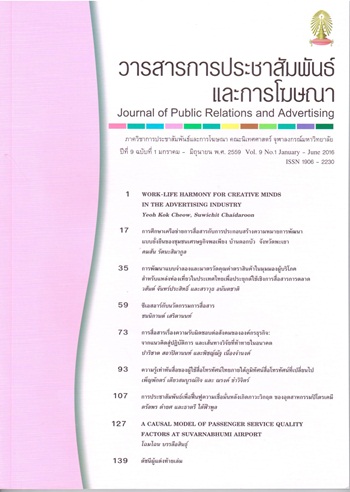ความรู้เท่าทันสื่อของผู้ใช้สื่อโทรทัศน์ไทยภายใต้ภูมิทัศน์สื่อโทรทัศน์ที่เปลี่ยนไป
Main Article Content
Abstract
This research aims to study the level of media literacy, dimensions of media literacy as well as factors that influence level of media literacy of Thais. The study intends to identify issues suggestions pertinent to media literacy level development of Thais under the changing media landscape.
Research methodology, an integrated method of qualitative research and qualitative research are used. Quantitative research method is a survey by questionnaire with a sample of television audiences across the country total 1,200 people and qualitative research method is a focus group on television audience of 6 groups and in-depth interviews with 15 experts.
The research results are reported in three parts as following:
The first part reports the status of current television landscape in Thailand after media reform, regulatory structure transformation, and changes in media technology. It has been found that three main elements are transforming the television landscape; broadcasting regulator, television industry, and television users.
The second part, the study found that the level of media literacy of Thai people is rather low. Demographic characters, with the exception of sex, have influence over or correlated with media literacy. Television usage pattern also found to be influencing. People living life in the new media landscape has higher level of media literacy than those living life in the old media landscape. The active audiences have higher level of media literacy than the passive audiences. The Heavy users higher level of media literacy than the light users. Focus group interview generally confirmed the rather low level of media literacy found in survey results. Study also provides the media landscape under the view of focus group participants.
The third part, to help develop media literacy among Thai people, the study found the issues that should receive priority are; 1. Media users lack media literacy, especially in the dimension of changing landscape. 2. Users unaware of the important and necessity of media literacy. 3. Lack of program variety in viewers’ viewing pattern, and focusing mainly on entertainment and news talk only. 4. Users social environment is not conductive to media literacy promotion.

